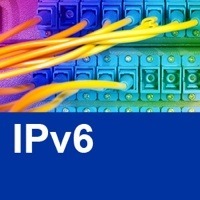 Earlier this month there was an interesting discussion on the public NANOG mailing list about IPv6 subnetting that I thought might be of interest to our readers.
Earlier this month there was an interesting discussion on the public NANOG mailing list about IPv6 subnetting that I thought might be of interest to our readers.
The very lengthy discussion thread began back on October 9, 2014, when Erik Sundberg asked this question:
I am planning out our IPv6 deployment right now and I am trying to figure out our default allocation for customer LAN blocks. So what is everyone giving for a default LAN allocation for IPv6 Customers. I guess the idea of handing a customer /56 (256 /64s) or a /48 (65,536 /64s) just makes me cringe at the waste. Especially when you know 90% of customers will never have more than 2 or 3 subnets. As I see it the customer can always ask for more IPv6 Space.
/64
/60
/56
/48Small Customer?
Medium Customer?
Large Customer?
The ensuing discussion makes for interesting reading to see what many network operators do and why they suggest doing things in the way that they do.
For our part, we have a page about IPv6 Address Planning that links to several resources that can help guide people in what to do:
http://www.internetsociety.org/deploy360/resources/ipv6-address-planning/
Of particular interest (and was mentioned in the discussion thread) may be the Best Current Operational Practice (BCOP) document developed by NANOG on this particular topic and available at:
http://bcop.nanog.org/index.php/IPv6_Subnetting
It was a great to read the discussion on the NANOG list. One of the hardest things to understand when thinking about IPv6 address planning is the need to adjust your mind from living with the scarcity of IPv4 addresses to where we have a world of abundance of IPv6 addresses. With that abundance we now have the freedom and flexibility to think about network addressing in a much different manner!
If you would like to get started with IPv6, please do visit our Start Here page to find resources tailored for your type of organization or role!
